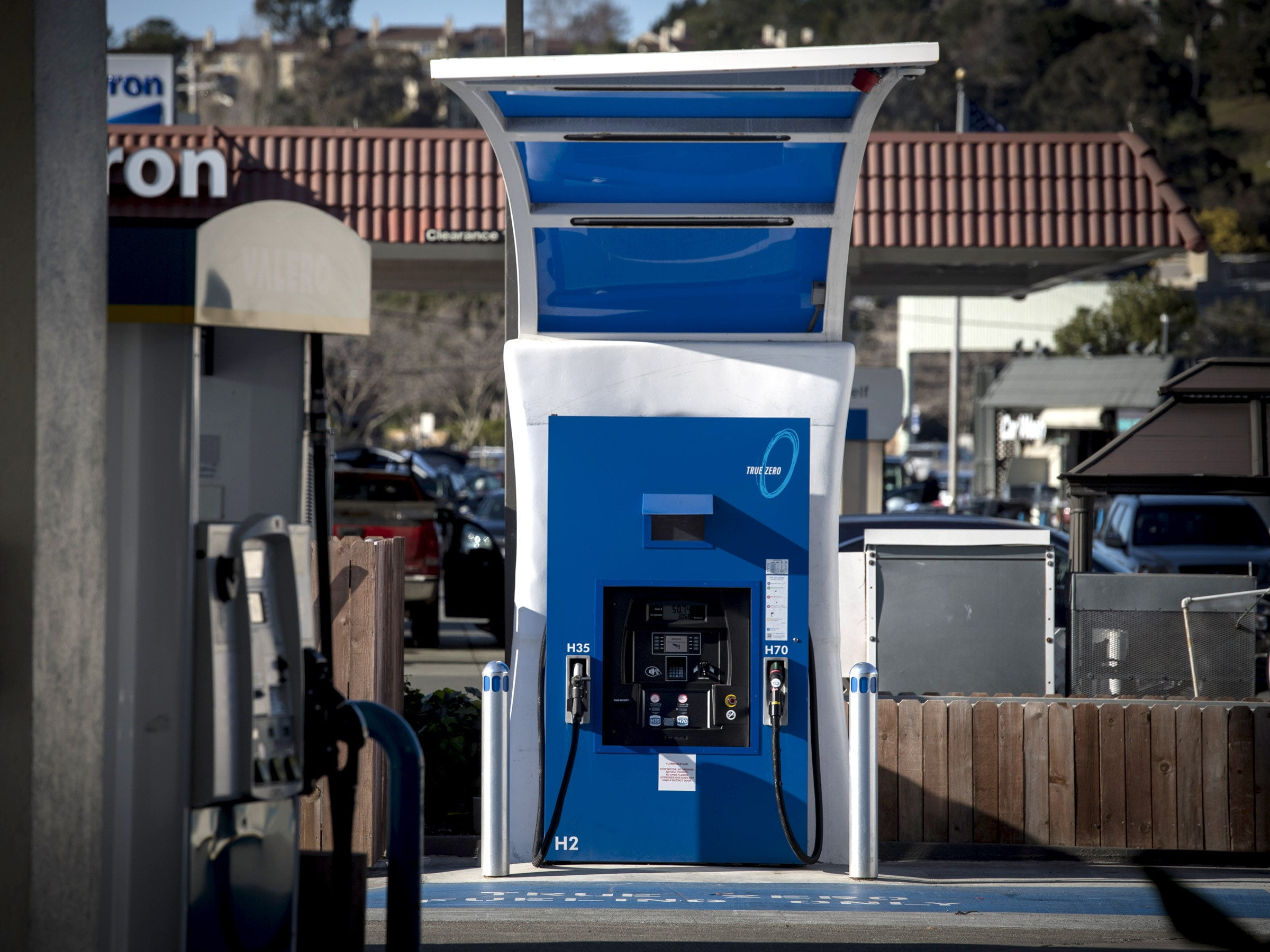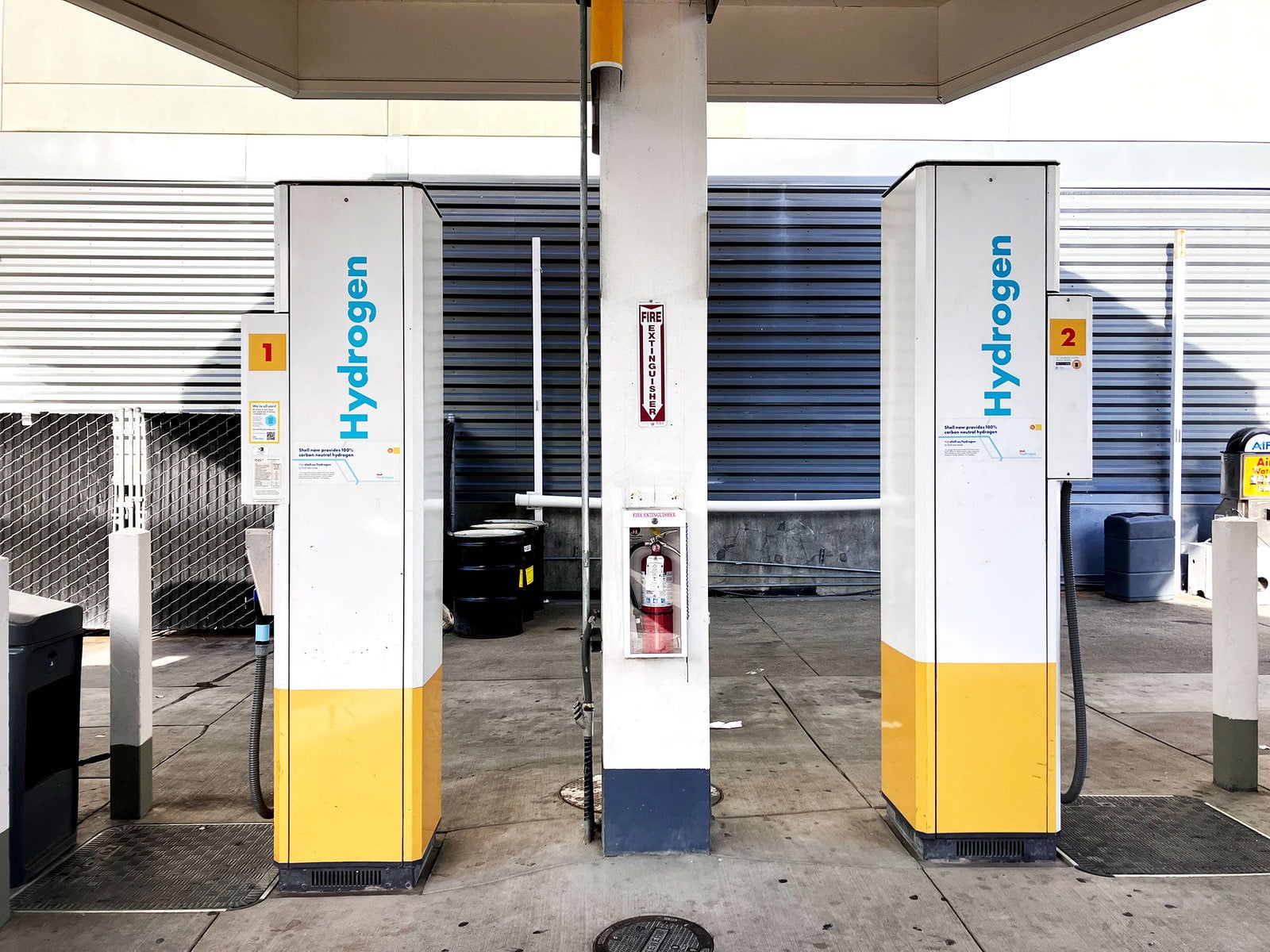
In Short
- California drivers who opted for fuel
- Cell electric vehicles encounter challenges due to fluctuating hydrogen prices and the closure of fueling stations.
- These hurdles stem from policy changes, rising operating costs, and technological limitations.
- Despite the setbacks, there is optimism with new funding and advancements in hydrogen technology.
TFD – Dive into the struggles faced by California drivers with fuel-cell electric vehicles, from fluctuating hydrogen prices to the closure of fueling stations. Explore the environmental impact and the future of hydrogen technology.
Debra Snell thought she did her research. Before she and her husband signed the paperwork on their new red Toyota Mirai last March, they went to a hydrogen fueling station near their home in Grass Valley, California, northeast of Sacramento. There, on two consecutive weekends, they interviewed members of a small but proud group: drivers who, attracted to environmental benefits, low price tags, and automaker and state incentives, took a chance on the first hydrogen fuel-cell electric vehicles (FCEVs).
“The majority of the reviews were excellent,” Snell says. Drivers and sellers informed her that hydrogen fueling was finally taking off after years of promises. The retired Snells are concerned about the environment. According to her, “we felt like it was a really pioneering thing to do” when they purchased the hydrogen fuel-cell vehicle. “We still do.”
However, the experiment was a disaster from the very beginning. Five miles from the Snells’ house, a gas station that had been closed when they purchased the car had reopened and then closed once more. The couple had anticipated paying $75 to fill up their tank; by last fall, the cost had increased to about $180. According to Snell, Toyota admitted to having fuel issues but decided not to buy the vehicle back. The pair has been renting a variety of hybrid cars for the past eight months while still making their $500 monthly car payment, thanks to the company’s help for certain struggling FCEV drivers while California deals with hydrogen-related concerns.
“In our driveway is a huge, exquisite red paperweight.”
One of the five operators of hydrogen fuel stations in the state, Shell Hydrogen, said this month that it would completely abandon the light-duty hydrogen fuelling business. It would close seven of its eight stations and attempt to transfer ownership of the eighth to another operator. 16 of the 53 hydrogen stations that are still operating in the state were offline this week, according to a dashboard kept up to date by the Hydrogen Fuel Cell Partnership, an association composed of government organizations and the commercial sector.
Due to Shell Hydrogen’s decision, Sacramento now has one station within its boundaries whereas San Francisco only has one. A year after the Snells switched to more environmentally friendly fuel, the nearest hydrogen station is now 65 miles distant, which is a long way to travel in a car that can travel about 400 miles on a single tank.

Snell remarks, “We have a huge, exquisite red paperweight in our driveway.”
Snell is just one of many Californians who own hydrogen fuel-cell cars but are having trouble because of a series of unfavorable events that have driven up the cost of hydrogen fuel and forced hydrogen fueling stations offline. These events include policy changes, rising station operating costs, technological limitations, and even the Russian invasion of Ukraine.
In 2022, the majority of fuel-cell electric vehicle (FCEV) drivers in the country lived in California, where there were just under 12,000 FCEVs operating on hydrogen rather than gas or pure electricity. (Hawaii is the only other state with a hydrogen fuel station open to the public.) Nearly 3,000 of the vehicles were purchased by American drivers last year, according to a trade association.
According to FCEV drivers who spoke with WIRED, they are in love with their vehicles since they are less expensive to buy new or used than comparable automobiles and provide smooth, comfortable rides and high-tech features. As an extra incentive, each purchase from the three automakers (Toyota, Hyundai, and Honda) selling cars in California comes with a $15,000 fuel card. Some drivers told WIRED that their FCEVs fit neatly into their lives, because they live near consistent fueling stations, can depend on another car when prices get too expensive, or don’t drive much at all. Some, however, claim they are unable to keep the automobiles moving.
According to Robin Gaster, a senior fellow at the Information Technology and Innovation Foundation and public policy researcher who just released a report on clean hydrogen policy, “we are suffering from premature deployment.” He contends that automakers and policymakers launched unproven hydrogen fuelling technology too soon.
In the fall of 2022, Scott Werntz, a resident of Sacramento, and his spouse Lori purchased a Toyota Mirai. The car seemed like a wonderful value because of the discount and fuelling card that were given. However, the pair started having to wait in line to refuel their car last year—sometimes for longer than an hour. Once, as they were waiting to top off, a nearby fuel-cell station failed and they had to have their car towed. According to them, they now rely on a free rental car from Toyota and another vehicle to move around.
According to Toyota spokesman Josh Burns, the business is aware of the state’s fuelling problems. In an email, he stated, “We remain committed to working with stakeholders to support California’s hydrogen refueling infrastructure now and into the future.” According to him, the business is assisting the owners of Mirais on an individual basis.
The executive director of the Hydrogen Fuel Cell Partnership, Bill Elrick, was directed to WIRED by a Hyundai representative. Elrick wrote that while the Shell Hydrogen closure may “cause temporary challenges,” the group remains optimistic due to new vehicles, funding, and infrastructure. A Honda representative named Carl Pulley stated that the business had invested in hydrogen fuelling infrastructure in California and emphasized the upcoming launch of the CRV e:FCEV, a new fuel-cell vehicle.
In a statement, Shell Hydrogen spokeswoman Anna Arata stated that the business wants to “be more disciplined in our delivery” and that it plans to spend $1 billion on carbon-capture storage and hydrogen technologies this year and next.
Fuel-cell electric cars are a compelling choice for consumers who want to reduce their carbon impact in several respects. They are a more environmentally friendly option to cars with internal combustion engines since they run on compressed hydrogen that is transformed into energy by onboard fuel cells.
Where battery electric vehicle technology falls short, hydrogen succeeds. The fuel appeals to those who are disheartened by the complex status of the electric vehicle battery supply chain as it is readily available, lightweight, emissions-free, and, in theory, inexpensive. Hydrogen filling a car is faster than gas filling up, taking only a few minutes as opposed to several hours at an EV charging station. Furthermore, FCEVs can go 400 miles on a single tank of fuel.
The majority of the hydrogen used in cars today is “gray” hydrogen, which nevertheless produces waste carbon dioxide. However, a plethora of substitutes, such as green, pink, blue, and white hydrogen, might provide more environmentally friendly ways to use the fuel.
However, promoting hydrogen fuel has been challenging in California. It spills easily and is costly to carry and store. Since the fall of 2021, the price of hydrogen fuel has more than doubled. Industry analysts attribute this increase to worldwide sourcing problems that extend from Russia to Canada. Additionally, the state’s initiatives to maintain and expand existing stations have come to a standstill. Operators have struggled to adhere to permitting timelines, find replacement parts, and keep older equipment running. The California Air Resources Board reported in December that a goal to open 100 or more hydrogen fueling stations by the end of 2023 wouldn’t be met until 2025 at the earliest.
However, more funding is on the way. California was chosen as a national hydrogen hub by the US Department of Energy last October, and the agency committed to supporting the alternative fuel with up to $1.2 billion. Shortly after Shell Hydrogen announced its intention to shut down, the state of California announced it will invest $1.9 billion to achieve its targets for hydrogen fuelling and electric vehicle usage.
It remains to be seen how passenger cars will fit into that affluent future. According to David Blekhman, a professor at California State University Los Angeles and the technical director of the Hydrogen Research and Fueling Facility, there is a “growing universe” of uses for hydrogen, ranging from transportation and aviation to steel, fertilizer, and renewable energy storage. The trucking industry in California is particularly enthused about hydrogen fuels because they enable longer travels, faster refilling, and larger loads than electric vehicles driven by bulky batteries—a benefit that comes with the burden of strict state emissions standards. Shell Hydrogen continues to run three heavy-duty hydrogen fuelling stations in Southern California in spite of the layoffs.
What about the Californians who currently own FCEV vehicles? “I wish to honor those trailblazers,” Blekhman declares. He advises anyone thinking about buying a hydrogen-powered vehicle to make sure they have access to reliable fueling stations nearby.
Unfortunately, Sacramento Mirai owner Scott Werntz does not feel that way. He claims, “The infrastructure isn’t there, but the vehicle is great.” “We adopted our children too soon.”
Conclusion
Despite facing challenges, California drivers with fuel-cell electric vehicles remain hopeful for advancements in hydrogen technology. The closure of fueling stations and fluctuating hydrogen prices highlight the need for infrastructure development and policy support. As the state invests in hydrogen initiatives, the future of environmentally friendly transportation looks promising, albeit with obstacles to overcome.
Connect with us for the Latest, Current, and Breaking News news updates and videos from thefoxdaily.com. The most recent news in the United States, around the world , in business, opinion, technology, politics, and sports, follow Thefoxdaily on X, Facebook, and Instagram .
